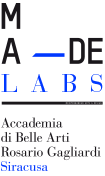NATURE'S NEW ELEMENT
¿Cuántas copias de la biblia catalana interconfesional
Hay enterradas en el vertedero de Sao Paulo?
Hay cuatro, una está un poco mordida,
Pero tres están en buen estado.
¿Cuántos incunables, cuántos miles de amatistas?
¿Y cuántas copias gratuitas de evaluación de Windows Vista
En el vertedero de Sao Paulo?, ¿en el vertedero de Sao Paulo?
Cientos, al menos una.
El vertedero de Sao Paulo no es una metáfora,
Sino un vertedero que tienen en Sao Paulo,
Según se ve Sao Paulo,
Tiran las basuras y van a parar a un vertedero.
(Astrud)
Consumerism has led us to a superabundance of objects and hence waste objects. This waste is sometimes reused, occasionally recycled, but in most cases it ends up in nature. Either in wasteland, all piled up together, or in the landscape or the ocean. It's this waste that is also affecting the environment and creating the basic condition for the coming years.
Plastic and metals take centuries to decompose. As loathsome as it might be, our garbage is becoming part of nature in a literal way, as much as rocks and rivers and trees.
The observation of nature in the future will also have to deal with this new addition. A painting by the Turner or Sorolla of the future will not be able to ignore the plastic relics of the past; there might even be some romantic element to a 200-year-old Barbie doll found on a beach.
Indeed, some objects will remain unaltered for centuries. A dumpyard, in fact, will act as a real-life object library, a database of the past. The antiquarian and archaeologist of the 23rd century will no longer need to go digging in a flea market or drill into the lava but rather submerge themselves in an old dumpyard for traces of past civilisations.
Because of the permanence of many of our daily objects, our time will be much more trackable and readable in the future.
The way we understand the past now, looking at layers of time in the ruins of a town like Syracuse, is fragmentary and speculative. We try to imagine the shape and meaning of a Roman chair by looking at a piece of it and then interpreting the signs we understand. The future will be way more literal. A Magis children's chair might be found in mint condition in 350 years. The use of that chair is immediate and understandable. They will probably have more trouble guessing the meaning of a 1994 PlayStation 1, or even more trouble guessing the ritual meaning of a 1998 Furby. Will these objects be collected and exhibited by the bourgeois of the future?
What we would like to do is play with both these ideas—and with our peers of the future—and together with the participants create a series of small-scale monuments that represent—or even misleadingly represent—our present to the future.
We will conceptualise a monument and build a small-scale model of it by using extremely durable materials. We will document the process and compile it into a catalogue: The Monuments of Syracuse, 2020. Once we've finished we will organise a burial ceremony in which we'll lay the monuments to rest, waiting for them to be rediscovered—and interpreted—in the 25th century.
- Slot 1
1st slot . 22—27.July

